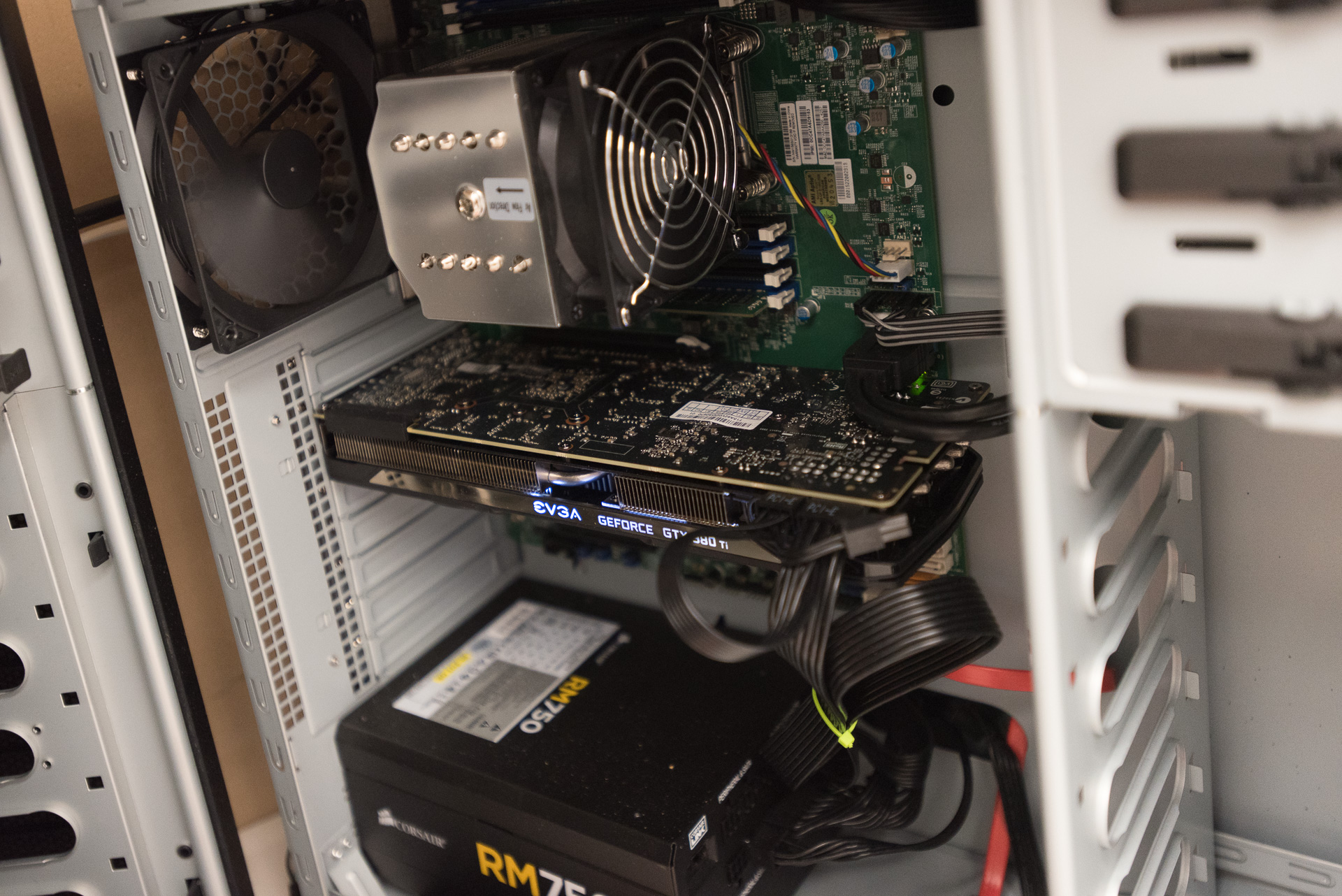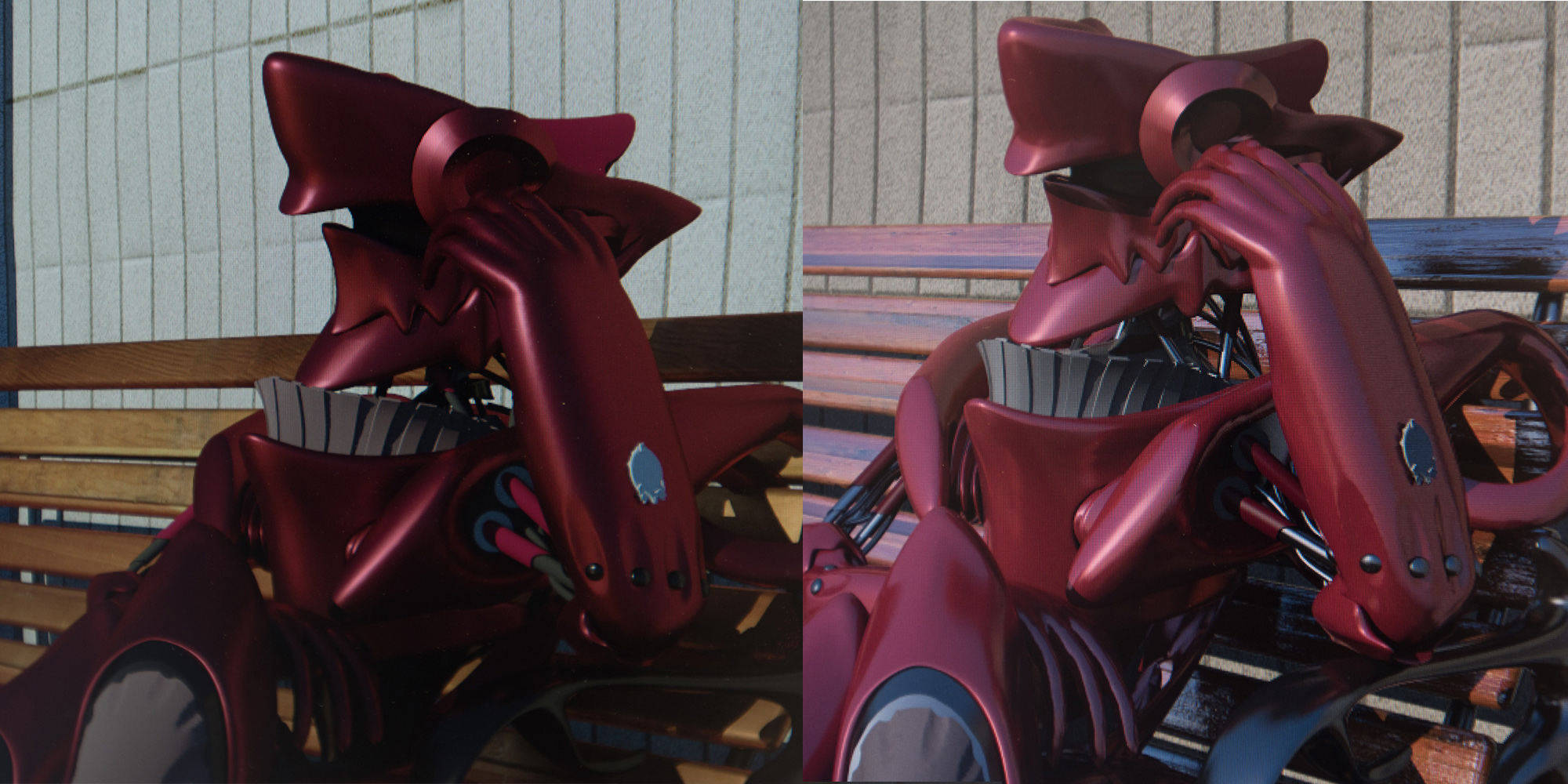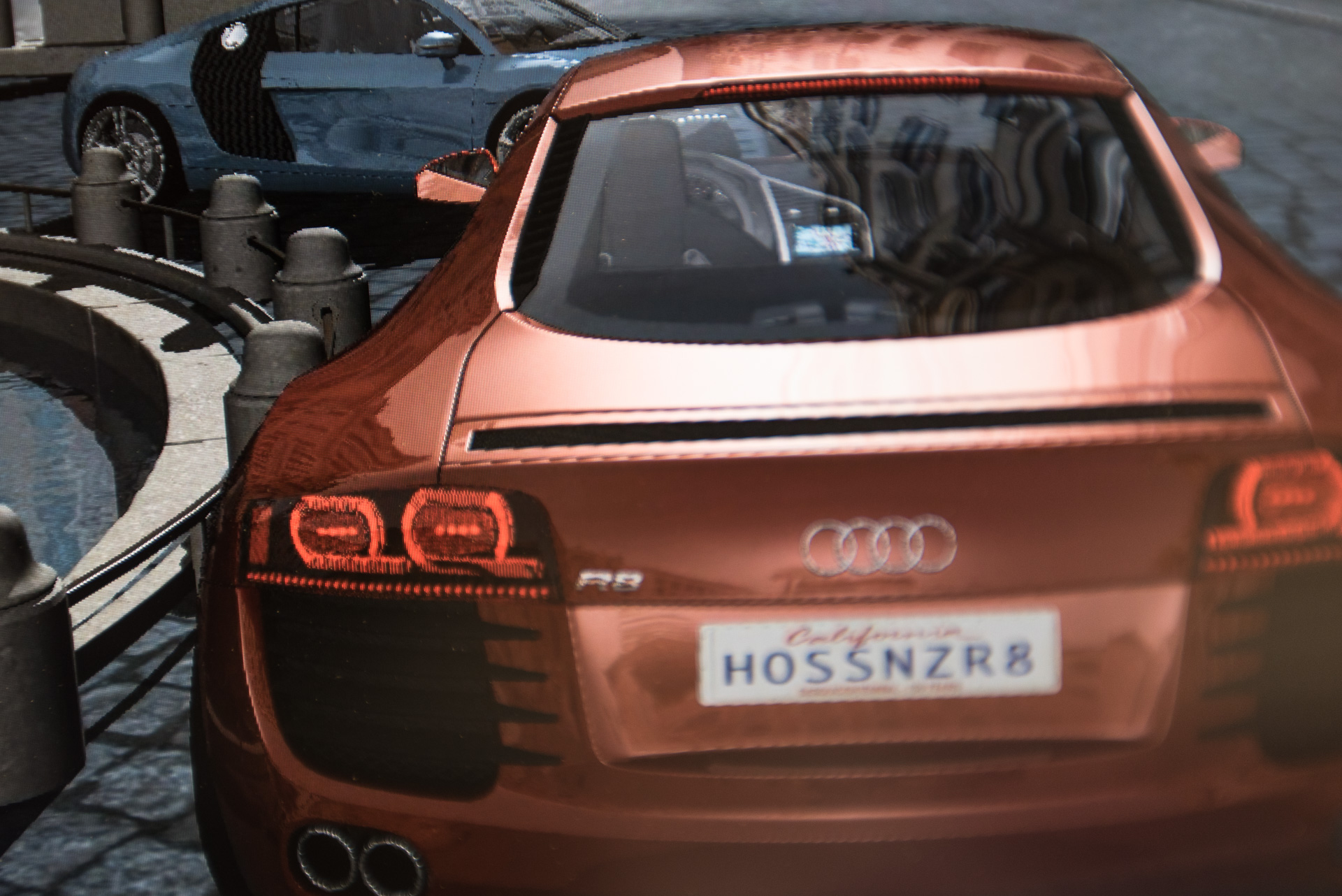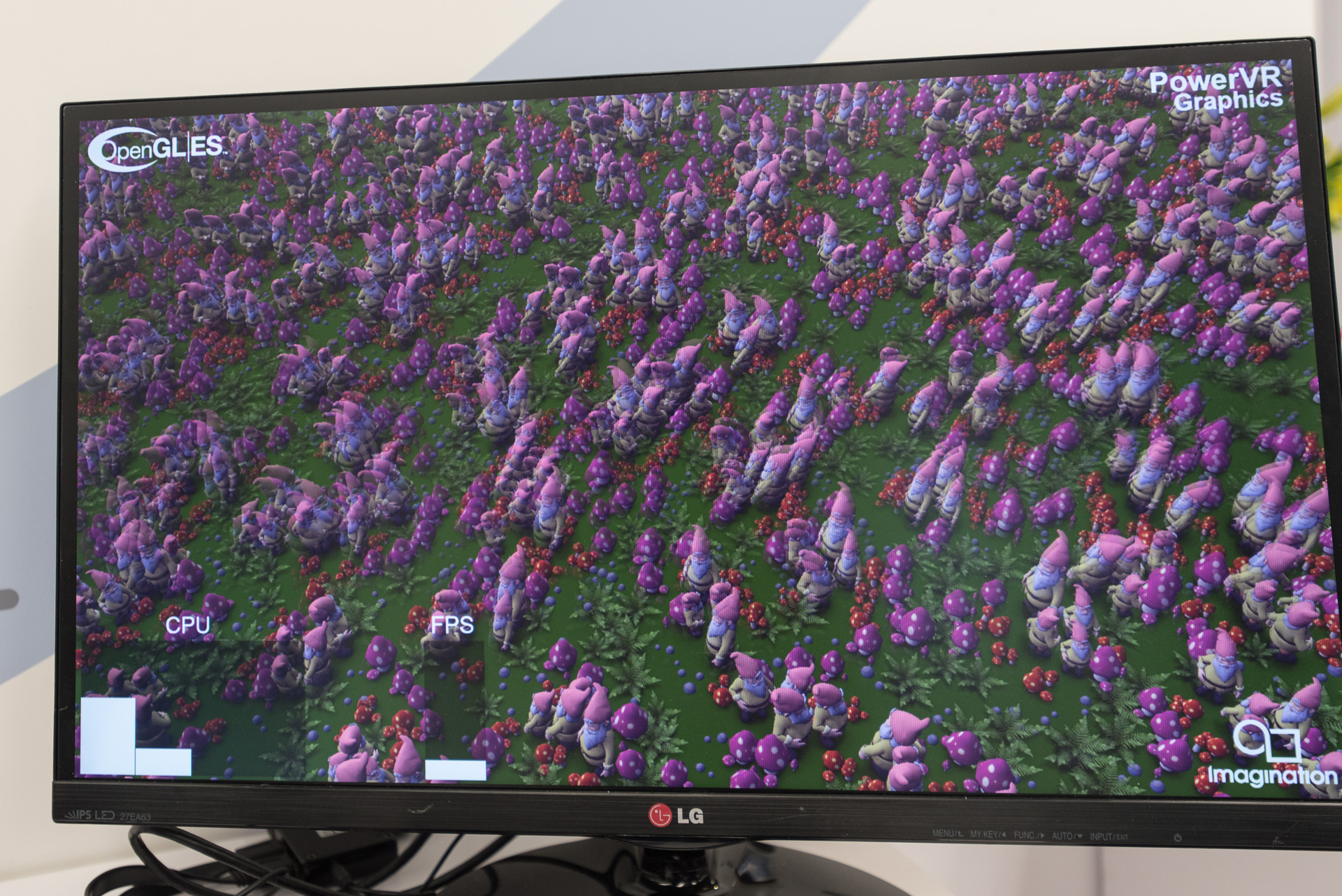Imagination Demos Realtime Ray Tracing (Update: Video)
Imagination Technology hasn’t quite become a household name in the same way as ARM or Qualcomm, but you almost certainly own products powered by its chips. The most well-known is the PowerVR that runs graphics in Apple’s A-series SOCs, but they’re also behind h.264 and HEVC video decoders in some of Intel’s Atom chipsets for Android.
Moving Into the Big League
Additionally, chips using the MIPS architecture, which Imagination acquired in 2013, are found in a host of embedded systems, including Qualcomm’s Wi-Fi chips and MobileEye automotive cameras, which are used in the Tesla Model S’s driver assistance features.
Essentially, this paints a picture of a company focused on small embedded systems and mobile graphics. However, Imagination is poised to make a push into the desktop graphics space and seems to be bringing some serious hardware to the fight.
At its booth at CES, Imagination demonstrated the new PowerVR Wizard, a slim, single-slot PCI card. The Wizard has no active cooling and draws only around 10 watts of power at load. It doesn’t look like a powerhouse, but in a ray tracing head-to-head, it handily beat an Nvidia 980 Ti.
For those not familiar, ray tracing is an ultra-realistic way of rendering lighting, shadows, and reflections in a scene by individually calculating the paths of thousands or millions of light-beams. It’s used in Pixar movies to improve the looks of shiny surfaces, and it can be part of what makes those movies takes hours per frame to render.
The test was rendering a single, unmoving image of a robot, using ray tracing. Each rendering pass added more detail to the image and improved its quality. The PowerVR Wizard produced a decent image so fast it simply seemed to appear, while the 980 Ti had a noticeable delay and slowly gained detail. Overall, the Wizard completed render passes more than five times as fast than the 980 Ti.
In addition to the standard complement of compute and shader processing, the PowerVR Wizard is built with a dedicated ray-trace renderer. This lets it perform graphical tricks not usually seen in a full size card, let alone a low-power model.
Get Tom's Hardware's best news and in-depth reviews, straight to your inbox.
Smoke and Mirrors (Albeit, Beautifully Rendered)
It should go without saying, but we weren’t able to get under the hood and see how these demos were set up and check their validity in real-world performance. Companies will always show you situations where their hardware is going to have an edge.
The test controlled for few enough variables that I’m still a little skeptical. The PowerVR was running on an Ubuntu system, and the 980 Ti was on Windows, using the open-sourced 3-D graphics software Blender and its Cycles Render Engine. The Ubuntu system was rendering through Resin and the Brazil render engine. Imagination stated that Resin and Cycles use the same techniques for processing lighting and rays, and that the whole setup is open source. This should let you can verify the same rays are being processed by each system, but it’s undeniably a less than perfect test setup.
All of these caveats are grounds for a healthy dose of skepticism, but doubts aside, I’m still impressed that a 10 watt card could outpace a 980 Ti at any graphical task.
Another demonstration showed the potential of ray tracing in the Unity Engine. The setup had four PowerVR Wizards installed in one system, doing flythrough of a static scene with 300 million rays. The reflections and detail in the scene were impressive, and it played back at 1080 HD and a stable 30 frames a second. Imagination worked with Unity to add ray tracing options to its APIs, which the Wizard can take advantage of.
It wasn’t all quite so smooth. A demonstration on a single card of an animated scene hiccuped and fuzzed its way through a 720p playback, but it still showed some incredibly realistic reflections and surface textures.
Of course, for this technology to gain any traction, it needs to get into the next generation of devices. Imagination said the card is 28nm, but they are working on a smaller process node, which would drop the power envelope as low as 3 watts and make it suitable for tablets.
Imagination said it’s received interest from all three major console makers, as well as John Carmack of Oculus. When we asked if Imagination was looking to license the ray-trace engine out to existing graphics card companies, they wouldn’t comment.
Lowering the Overhead
Aside from this focus on ray tracing, Imagination is also trying to get their chips ready for the next wave of graphics APIs. A member of the Khronos group and supporters of OpenGL, Imagination has been working hard to make sure its chips and the upcoming Vulkan low-level API work well together.
A graphics demonstration flying over a field of gnomes was buttery smooth with almost no CPU impact under Vulkan, but it stuttered and chugged along at only a few frames per second on traditional OpenGL. The Vulkan demo also did a far better job spreading the workload, low that it was, across the four available threads, with OpenGL having a much greater impact on the first core.
Overall, Vulkan provided nearly a five-times increase in framerate, though the Imagination rep admitted this was a special case, and most applications will see a smaller gain.
Imagination is also working to make sure its products will get the same sort of boost from Apple’s Metal API -- no big surprise considering the PowerVR chips are in every iPad and iPhone.
All of these technologies will take some serious real-world testing to prove themselves, but for the sake of all of us having photo-realistic, perfectly ray-traced games on our tablets, we can hope they pan out.
Update, 1/8/16, 1:30am PT: We acquired new information regarding the rendering software the PowerVR was running, and removed a reference to the Ascend Mate 8. The article has been updated accordingly.
Update, 1/11/16, 1:30pm PT: Added video.
-
kenjitamura This sounds really awesome. I wonder if video game/graphics engine developers can disable ray tracing on the GPU at driver level and leave it all up to this slim add-on card. It'd free up GPU power for everything but ray-tracing and come out with a significantly better picture.Reply
If that can happen and they keep the cost of the card low enough then this will become a ubiquitous desktop component until the GPU developers decide to include their own dedicated ray-tracing processor on the graphics card. But if it has a high price then I think this will become a niche item for 3D artists which would still be a pretty big market. -
Shankovich Very nice, reminds me of the PhysX cards long ago ;). It is my hope that at some point this becomes something licenced that AMD and nVidia can add to their cards/ architectures in the future.Reply -
palladin9479 This as an add-int card isn't such a good idea, I think they are using it to demonstrate their technology IP and attract licensing from the big manufacturers. Intel, nVidia and AMD will all end up licensing this technology and integrating it into their existing products.Reply -
cschodt I think that was the idea.Reply
This card isn't really the final product, it's a testbed and showcase for the technology.
Imagination either wants to get the contract to build the gpu for a console, or get this chip shrunk to mobile scale and have it added to an SOC. -
alextheblue If it was cheap enough I wouldn't mind it as an add-on board at least initially. As long as it gets licensed and not snapped up ala PhysX, so it could end up implemented in solutions from multiple vendors.Reply -
Mousemonkey So how much are Nvidia going to shell out for this one? Anyone care to wager? :lol:Reply -
f-14 what were the system specs of the two machines? was it a 980ti paired with ddr3 1066 and a pentium vs the VR card paired ddr4 3200 with an i7-8350 or i7-6700?Reply
lots of ways to rig that. -
bloodroses75 Replywhat were the system specs of the two machines? was it a 980ti paired with ddr3 1066 and a pentium vs the VR card paired ddr4 3200 with an i7-8350 or i7-6700?
lots of ways to rig that.
My guess is that the machines are the same. Nvidia and AMD cards atm aren't really designed for ray tracing; just brute force rasterisation and shading.
It would be interesting to see a comparison of the Nvidia card using rasterisation vs the PowerVR using ray tracing to see if the performance/image comparison is closer.
-
c0rr0sive Anyone remember PhysX cards? Same thing will happen once this company gets a usable product out. Nvidia will surely buy them up before AMD or Intel can ever attempt to buy them, and it will become an nvidia exclusive technology.Reply -
ratzes The fact that the image done by the gpu loaded in chunks before a long pause makes me think that the pause before was a driver initialization phase or cutting the scene in such a way to be processed. The chunks loaded much faster after the first chunk loaded (albeit much slower than the ray tracer card). Thought it would be worth being skeptical that the whole pause was just the nvidia card crunching.Reply





